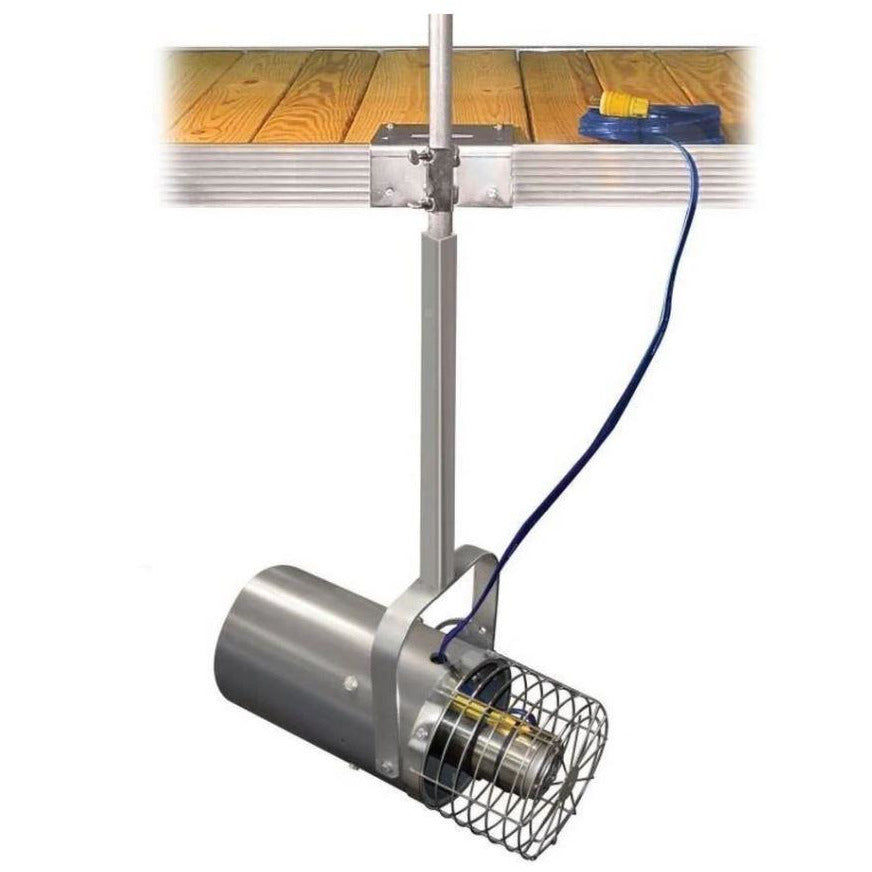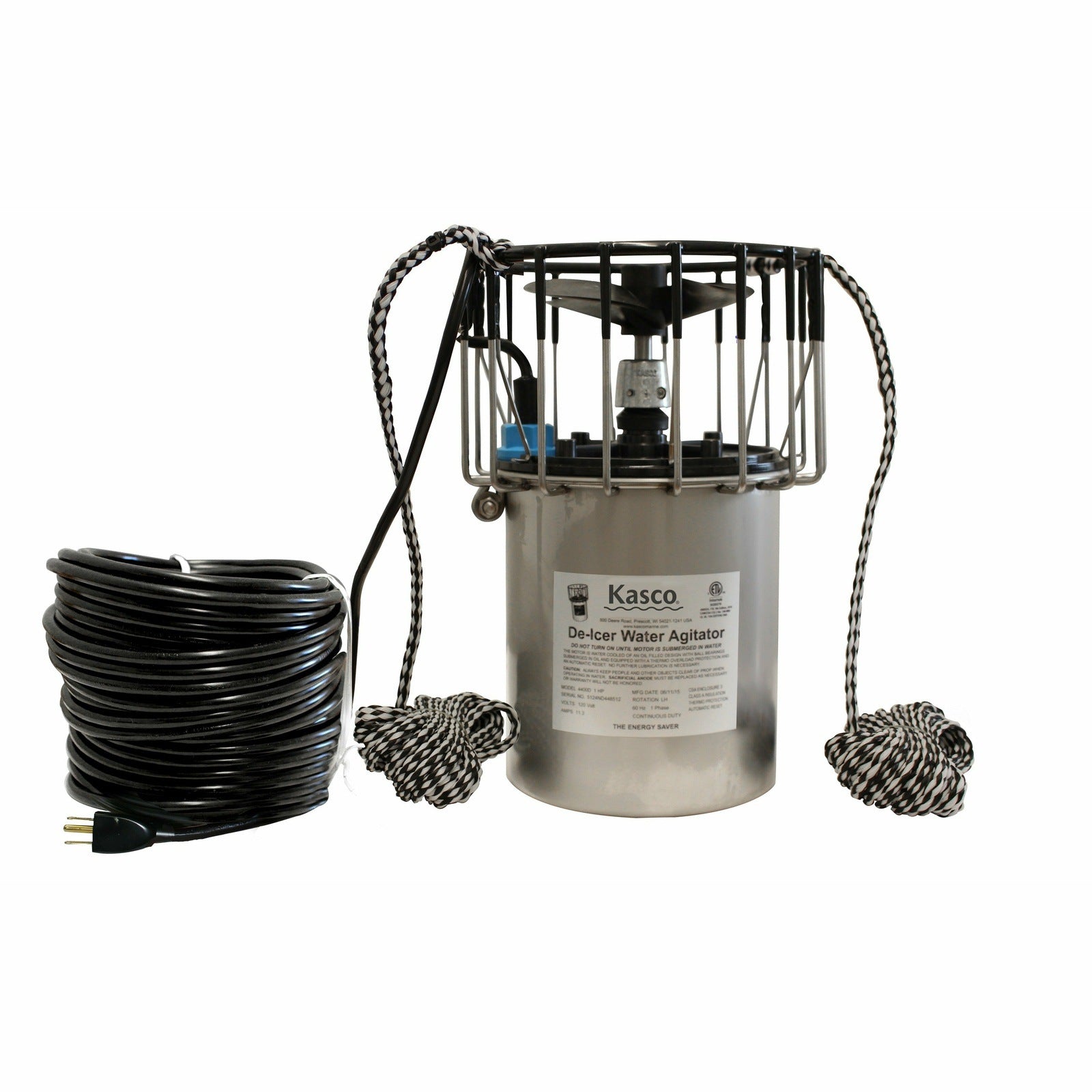Maintaining a healthy pond throughout the winter months can be a concern for many owners, especially those with fish. While a frozen pond may seem picturesque, it can pose a serious threat to your aquatic life if left unmanaged. This is where pond de-icers come in.
What is a pond de-icer?
A pond de-icer is a small, electrical device designed to prevent the complete freezing of your pond's surface. It typically floats on the water or sits submerged at the bottom. These devices operate using electricity. Once positioned, it utilizes a high-performance 115V or 230V motor to power a propeller, creating upward water circulation. This process draws warmer, deeper water to the surface, preventing the formation of ice by disrupting the natural freezing cycle.
How does it work?
During winter, decomposing organic matter and fish respiration release harmful gases like ammonia and methane. A de-icer keeps a vital opening, allowing these gases to escape and preventing them from building up under the ice, which could otherwise suffocate your fish.
Types of Pond De-Icers
There are two main types of pond de-icers available:
- Floating De-icers: These are the most common type and float on the surface of the water. They are typically made of plastic and have a heating element inside.
- Submersible De-icers: These de-icers sit submerged at the bottom of the pond. They are usually made of metal or plastic and can be more powerful than floating de-icers.
Factors Affecting De-Icer Performance
Several factors can affect the performance of your pond de-icer:
- Pond size: The size of your pond is the most important factor to consider when choosing a de-icer. You need a de-icer powerful enough to keep an adequate opening in your pond size.
- Depth: Consider the depth of your pond, as some de-icers are more efficient in shallower or deeper water.
- Climate: If you live in a region with harsh winters, you may need a more powerful de-icer compared to milder climates.
- Wind: Wind can chill the water and make it harder for the de-icer to maintain an opening. Consider placing the de-icer in a sheltered area.
Proper Installation Techniques
When installing a pond de-icer, ensure that the device is securely positioned in the water and that all electrical connections are waterproof for safety.
Optimal Placement for Maximum Efficiency
For optimal efficiency, place the pond de-icer near the center of the pond to create a larger ice-free area and promote better gas exchange for aquatic life.
Maintenance of your De-Icer
- Clean it regularly: Remove debris and ice buildup to ensure it works well.
- Check for damage: Look for wear and tear to prevent malfunctions.
- Be prepared for weather changes: Have a backup plan in case of power outages or extreme cold.
Safety Tips
- Use a GFCI outlet: This helps prevent electrical accidents.
- Avoid extension cords: Unless recommended by the manufacturer.
- Choose eco-friendly options: If available, help protect the environment.
-
Keep wildlife safe: Ensure animals are not harmed by the de-icer.
Conclusion
Pond de-icers can be your pond's winter heroes! They keep your fish and plants happy and healthy, and your pond ecosystem in balance. Remember to clean your de-icer regularly, stay prepared for weather changes, and prioritize safety. With these simple steps, your pond can thrive all winter long.
FAQs
1. Can I use a pond de-icer in all types of ponds?
Not necessarily. While most de-icers can be used in various ponds, consult the manufacturer's instructions to ensure it is suitable for your pond type and material.
2. How long should a pond de-icer run each day?
Pond de-icers should run continuously during freezing temperatures to maintain the ice-free area. Turn them off only during thaws or when not needed.
3. Are Pond de-icers safe for fish and other aquatic life?
Yes, pond de-icers are safe for fish and other aquatic life. They only create a small, ice-free area and don't significantly alter water temperature.
4. Do Pond de-icers require any special maintenance or care?
Yes, de-icers require some maintenance. Clean them regularly to remove debris and ice buildup and inspect them for damage before each winter season.














1 comment
Peter Maxwell
Last year, I bought pond de-icer from https://purelyponds.com/product/pond-de-icer/ to get ready for winter. The level of expertise with which they gave installation and maintenance advice shocked me!